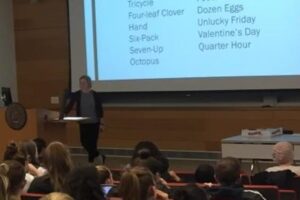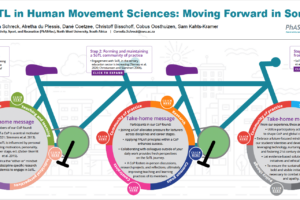Students as Partners: Surprised at ISSOTL17
Written by Corinne Green, University of Wollongong (corinneg@uow.edu.au)
ISSOTL as a whole is remarkably welcoming of students, student voice, and student participation. This is particularly palpable at the annual conference, with student welcome events, student presentation and poster awards, and presentations about and for students. It was at ISSOTL16, my first international conference, that I first became aware of the concept of ‘Students as Partners’, along with a range of other new-to-me SoTL terms.
I was at ISSOTL16 as a research assistant and a soon-to-be PhD student and teacher educator, having been encouraged to come and accompanied by my colleague/supervisor/boss, Dr Michelle Eady. While there, we made connections with a number of people from around the world who were, like us, figuring out what SoTL means in our institutions and our work. Michelle and I (from Australia) became close with some delightful Irish folks (Dr Marian McCarthy, Dr Briony Supple, Jacinta McKeon, and James Cronin) as well as a lovely American (Ashley Akenson). Recognising that the significant conversations we were having in LA would likely be squashed by the realities of our real lives, with their pesky obligations, deadlines, and general busyness, we made a ‘pinky swear’ that we would keep in touch beyond the conference.
We video-conferenced from three time zones throughout the year, stretching and supporting each other’s understanding and implementation of SoTL in our contexts. We joyfully reunited at ISSOTL17, and presented our experiences at the conference (for more details about our SSONG – Small, Significant Online Network Group – and how you too can connect with international colleagues around SoTL, keep an eye out for our forthcoming paper!).
At this presentation, an insightful comment from Trent Maurer revealed that we had been engaging in a ‘students as partners’ project all year. This was, to be honest, a bit of a surprise! Of course, we knew that four out of the seven SSONG members (Ashley, Jacinta, James, and myself) were PhD students, and that the demands of their theses had prevented two of our number (Jacinta and James) from attending ISSOTL17, and yet it was still odd to think of our group as a ‘students as partners’ initiative.
Upon reflection, I have realised that this is perhaps how the best ‘students as partners’ projects should be. If you can get to the point where the students are equal contributors, where their voices and perspectives are given the same amount of respect and value as anyone else’s, then you may well have achieved true partnership.
For our group, I believe a catalyst for this partnership was the fact that we met on equal terms, as researchers, at a research conference. There was no need to segregate between the ‘students’ and the ‘academics’ – in fact, these lines were blurred by the very nature of our roles as researchers, educators, and learners. We noticed more difference (and I mean that in the most positive sense possible) between our contexts that in our status, and this led to fruitful conversations about SoTL around the world. Each member of our SSONG had expertise to share – from Marian’s poetic analogies of the work we were engaged with, to Ashley’s considered reflections, to my organisational skills. Because of these intentional and accidental aspects of our collaboration, we have all been equal and valued partners in our efforts to have significant conversations that go beyond the ISSOTL conferences.
While it was a surprise to discover that we were doing ‘students as partners’ work, it has been delightful and very rewarding to work in partnership with international colleagues as we explore the impact of SoTL in our own contexts. Can I encourage you – whether student, academic, or a bit of both – to consider how you can partner with your colleagues as we SoTL together?!




